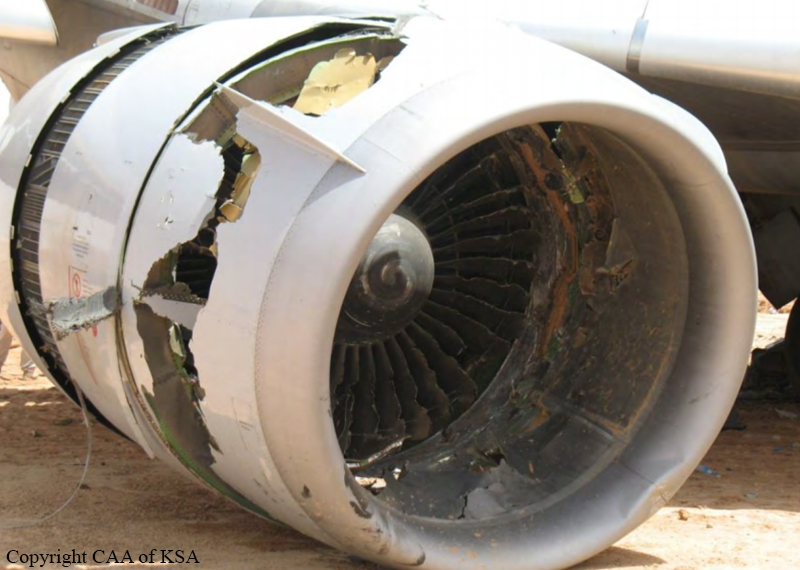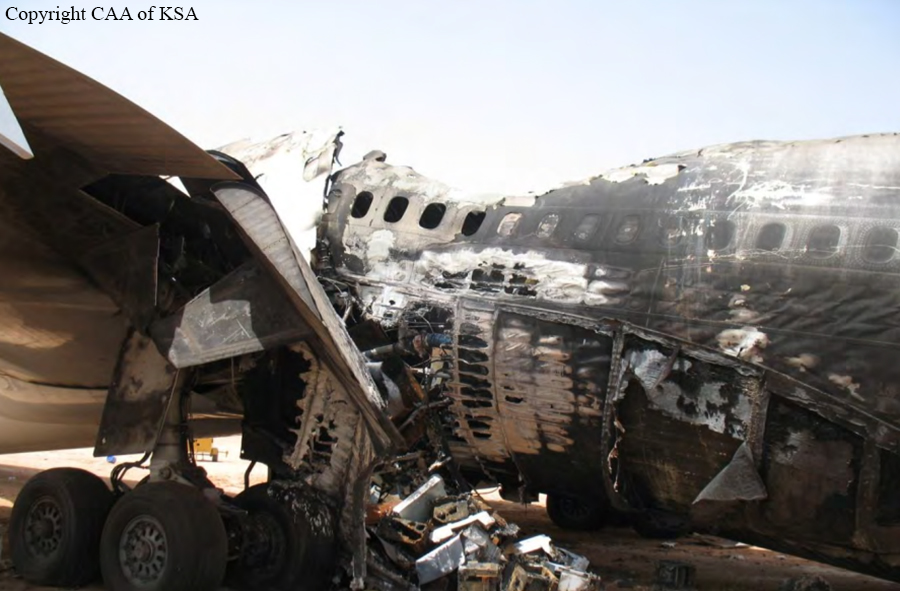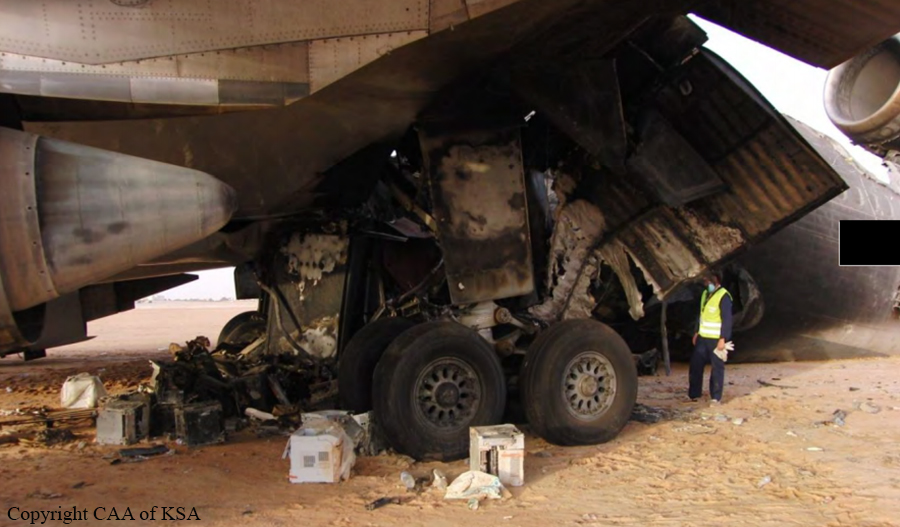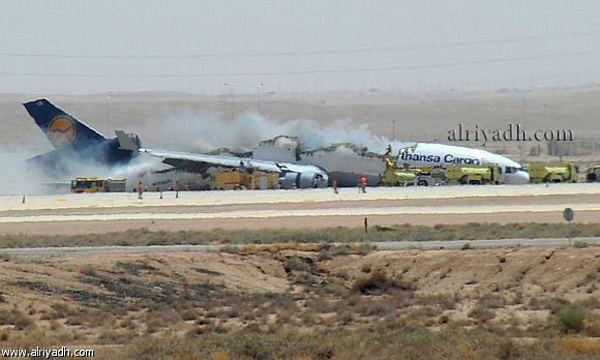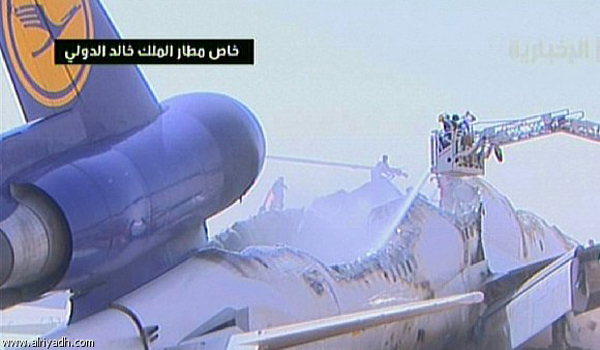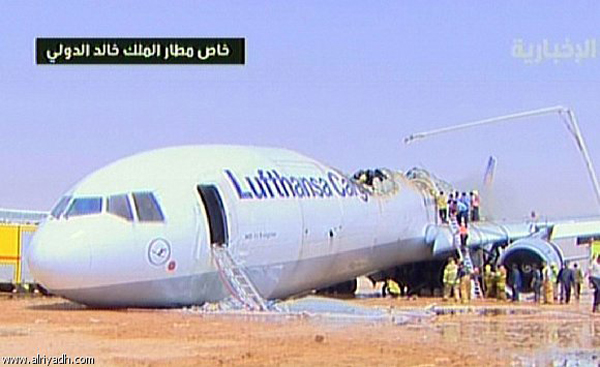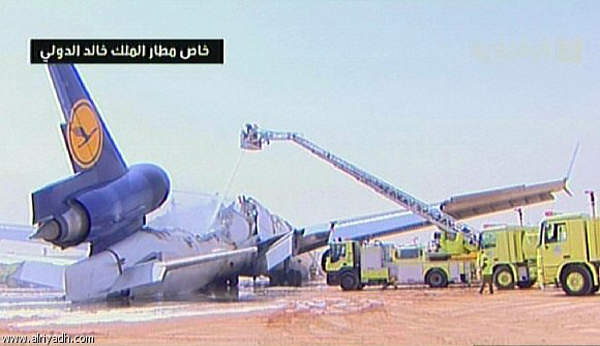Country
Crash of a McDonnell Douglas MD-11F in Campinas
Date & Time:
Oct 13, 2012 at 1852 LT
Registration:
N988AR
Survivors:
Yes
Schedule:
Miami - Campinas
MSN:
48434/476
YOM:
1991
Flight number:
CWC425
Crew on board:
3
Crew fatalities:
Pax on board:
0
Pax fatalities:
Other fatalities:
Total fatalities:
0
Copilot / Total hours on type:
1368
Circumstances:
The airplane took off from Miami International Airport (KMIA), destined for Viracopos Airport (SBKP), with two pilots and a mechanic on board, on a non-regular cargo transport flight. The flight was uneventful up to the moment its landing in SBKP. On the approach for landing on runway 15, the crew performed the IFR ILS Z procedure. The weather conditions were VMC, with the wind coming from 140º at 19kt. When the aircraft was granted clearance to land, the wind strength was 20kt, gusting up to 29kt. The copilot was the Pilot Flying (PF), and the captain was the Pilot Monitoring (PM) at the moment of landing. When the aircraft touched down on the runway after the flare, the left main landing gear collapsed, causing the aircraft to skid on the runway for approximately 800 meters before stopping. There was substantial damage to the left main gear assembly, to the left wing, and left engine. The aircraft stopped within the runway limits. All three crew members were uninjured.
Probable cause:
It was determined that the “the landing gear failed due to overload in the cylinder structure”. The fracture started in the rear section of the cylinder in a connection hole which served as a tension concentration point, and ended in the front part of the cylinder with its breakage into two parts. Following a failure of the right main gear upon landing in Montevideo on 20 October 2009, the right main landing gear was replaced by VARIG Engineering & Maintenance (VEM), but the organization responsible for the research of damage, the specification of the services necessary for the restoration of airworthiness, and the provision of the services that enabled the restoration of the aircraft to an airworthy condition was not identified. The same aircraft parts were subjected to metallurgical analysis at the Boeing Long Beach Materials, Processing and Physics [MP&P] Laboratories, in Huntington Beach, California, USA; and the technical report issued by Boeing highlighted that in one of the points of origin of the failure, the analysis had identified characteristics similar to a pre-crack point, which would have begun earlier, probably due to overload. In the tasks that led to the restoration of the aircraft airworthiness after the accident in Uruguay in 2009 (Hard-Landing), and also in subsequent periodic inspections, the existence of pre-crack traces resulting from a previous overload condition may not have been identified, something that could have resulted in a point of stress concentration.
Final Report:
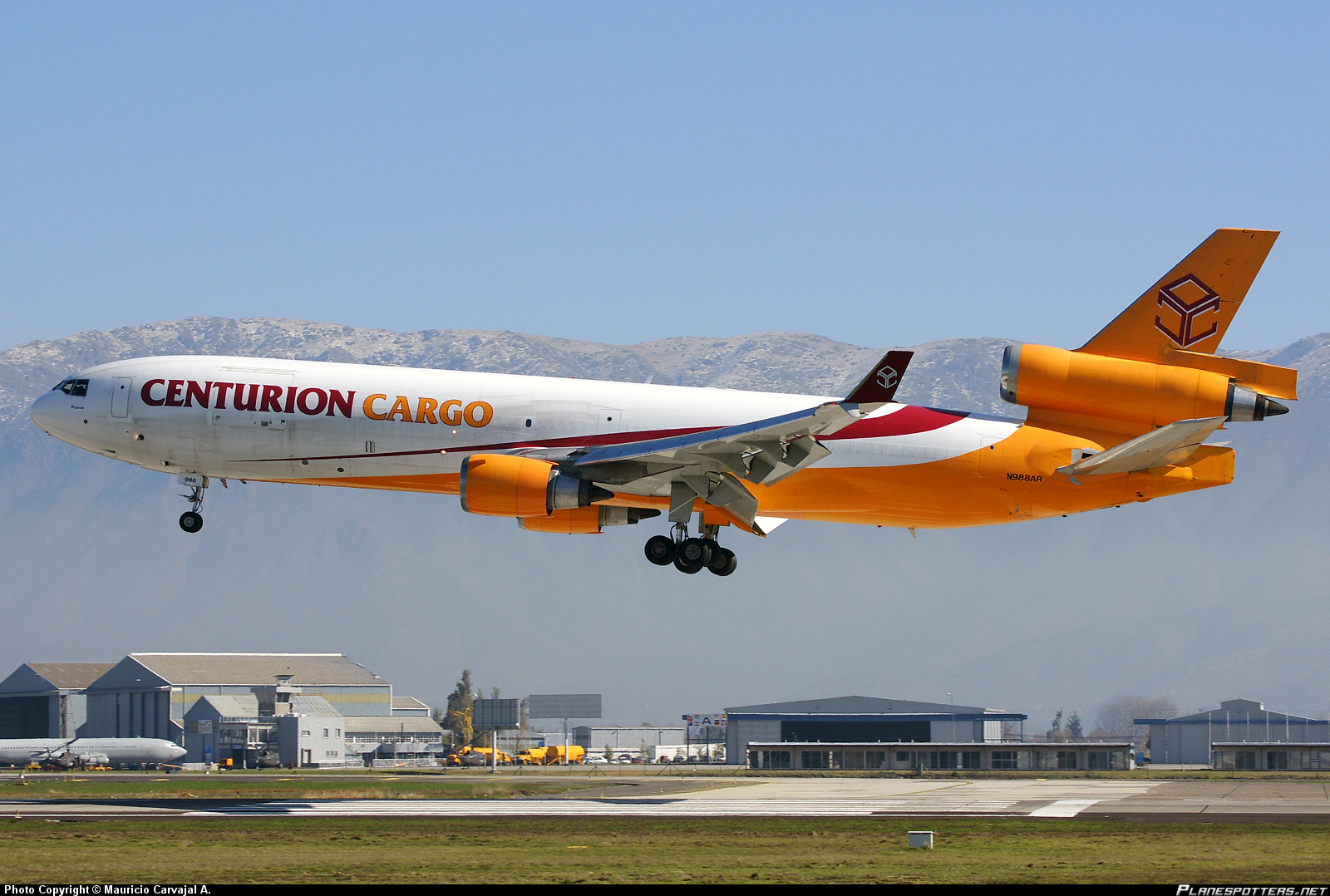



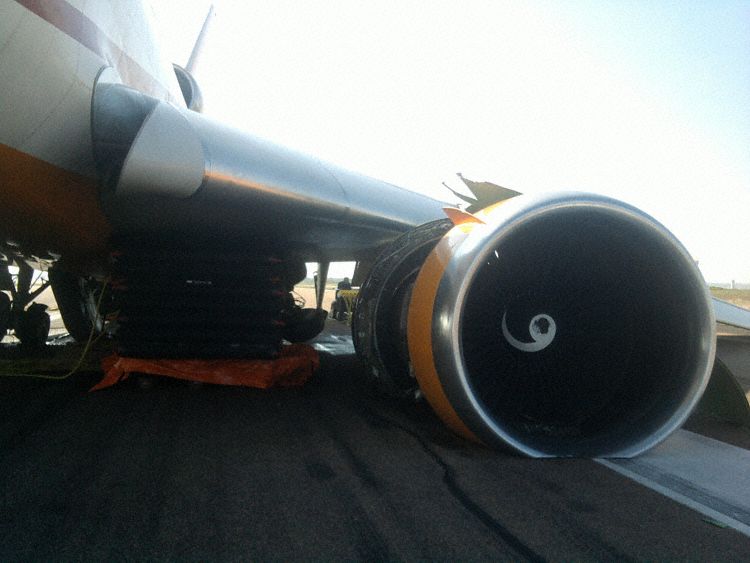
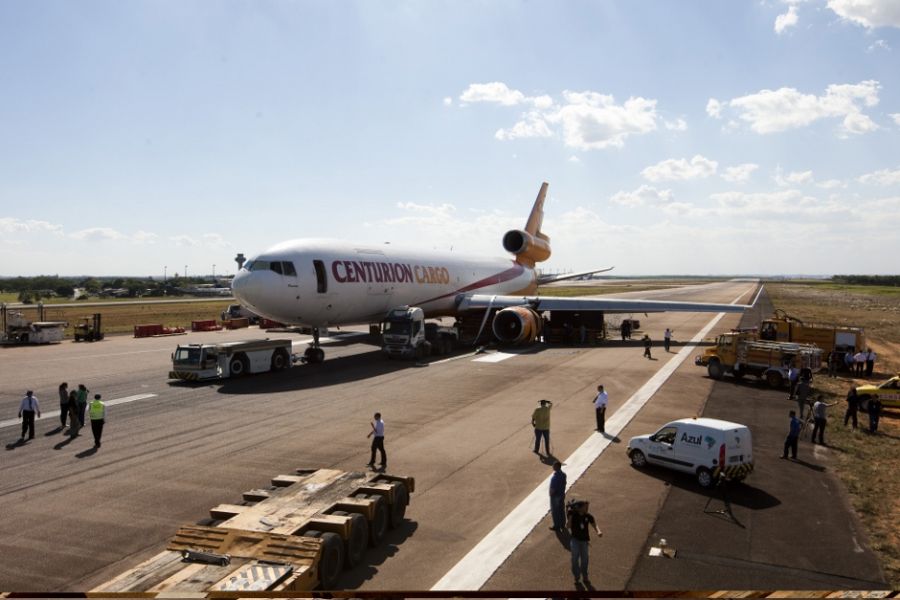
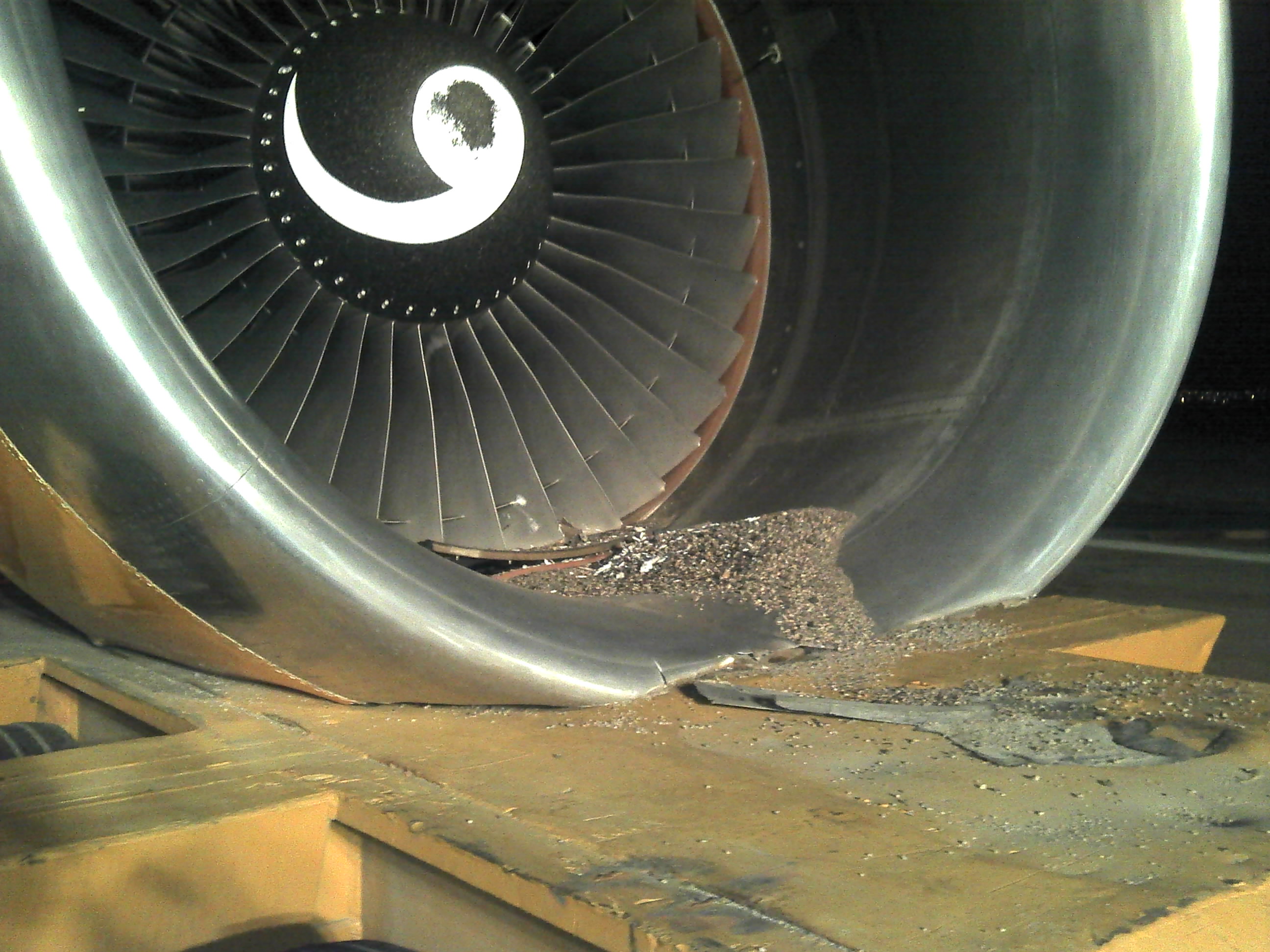
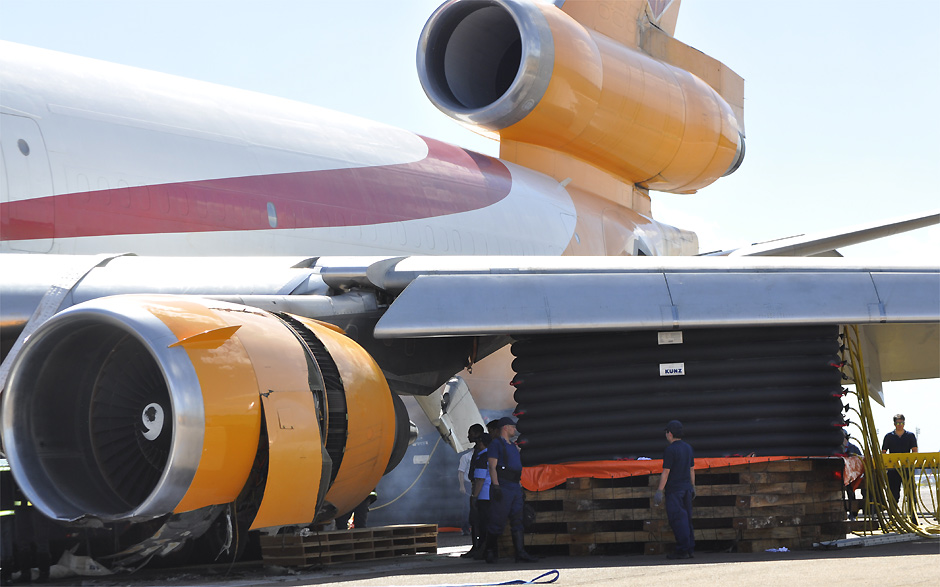
Crash of a McDonnell Douglas MD-11F in Riyadh
Date & Time:
Jul 27, 2010 at 1138 LT
Registration:
D-ALCQ
Survivors:
Yes
Schedule:
Frankfurt - Riyadh
MSN:
48431/534
YOM:
1993
Flight number:
LH8460
Crew on board:
2
Crew fatalities:
Pax on board:
0
Pax fatalities:
Other fatalities:
Total fatalities:
0
Captain / Total hours on type:
4466.00
Copilot / Total hours on type:
219
Aircraft flight hours:
73247
Aircraft flight cycles:
10073
Circumstances:
The airplane operated on Flight LH8460, a scheduled cargo service operating from Frankfurt (FRA) to Riyadh (RUH). It carried 80 tons of cargo. The accident flight departed Frankfurt about 05:16 local time (03:16 UTC), 2.5 hours later than originally scheduled due to minor maintenance issues. The accident flight was the first time the captain and first officer had flown together. The captain decided that the first officer, who had been employed with Lufthansa Cargo for 7 months and had not flown into Riyadh before, would fly the leg because he believed it would be an easy leg appropriate for the first officer. Cruise flight and approach to Riyadh were uneventful. The first officer indicated that he completed the approach briefing about 25 minutes before landing, calculating that he would use a flap setting of 35°, target 72 percent N1 rpm on final approach, expect a pitch attitude of about 4.5° on final approach, and commence the flare about 40 feet above ground level (agl). The flight was radar vectored to the instrument landing system of runway 33L, and the first officer flew the approach with a planned Vref of 158 knots. Convective conditions prevailed, with a temperature of 39°C and winds at 15 to 25 knots on a heading closely aligned with the landing runway. The aircraft was centered on the glide slope and localizer during the approach, until 25 seconds before touchdown when it dipped by half a dot below the glide slope. During that period, the indicated airspeed oscillated between 160 and 170 kt, centered about 166 kt. The ground speed was 164 kt until 20 sec. prior to touchdown, when it began to increase and reached 176 kt at touchdown. The flare was initiated by the first officer between 1.7 and 2.0 sec. before touchdown, that is: 23 to 31 feet above the runway. The main gear touchdown took place at 945 ft from the runway threshold at a descent rate of -13 ft/sec. (780 ft/min) resulting in a normal load factor of 2.1g. The aircraft bounced with the main gear reaching a maximum height of 4ft above the runway with the spoilers deployed to 30 degrees following main-wheel spin up. During this bounce, the captain who was the Pilot Monitoring (PM) pushed on the control column resulting in an unloading of the aircraft. The aircraft touched down a second time in a flat pitch attitude with both the main gear and nose gear contacting the runway, at a descent rate of -11 ft/sec. (660 ft/min), achieving a load factor of 3.0g. Just prior to this second touchdown, both pilots pulled on the control column, which combined with the rebound of the nose gear from the runway, resulted in a 14° pitch angle during the second bounce. Additionally, the spoilers reached their full extension of 60° following the compression of the nose gear strut during the second touchdown. During this second bounce, the main gear reached a height of 12 ft above the runway. Early in this second bounce, the captain pushed the control column to its forward limit and the elevators responded accordingly. Prior to the third and final touchdown, both pilots pulled back on the control column at slightly different times. Although the elevators responded accordingly and started to reduce the nose-down pitch rate, the aircraft was still pitching down at the third touchdown. During this third touchdown, the aircraft contacted the runway at a descent rate of -17 ft/sec (1020 ft/min), thus achieving a load factor of 4.4g. At this point, the aft fuselage ruptured behind the wing trailing edge. Two fuel lines were severed and fuel spilled within the left hand wheel well. A fire ignited and travelled to the upper cargo area. The captain attempted to maintain control of the aircraft within the runway boundaries. Not knowing about the aft fuselage being ruptured and dragging on the runway, the captain deployed the engine thrust reversers, but only the no. 1 and the no. 3 engines responded. The captain maintained directional control of the aircraft as best he could and requested the First Officer to declare a Mayday. The aircraft then went towards the left side of the runway as the captain attempted, without success, to maintain the aircraft on the runway. As the aircraft departed the runway, the nose gear collapsed and the aircraft came to a full stop 8800 ft from the threshold of the runway and 300 ft left from the runway centerline. The fuel to the engines was cut off and both pilots evacuated the aircraft by using the slide at the Left One (L1) door. The mid portion of the aircraft was on fire.
Probable cause:
Cause Related Findings:
1. The flight crew did not recognize the increasing sink rate on short final.
2. The First officer delayed the flare prior to the initial touchdown, thus resulting in a bounce.
3. The flight crew did not recognize the bounce.
4. The Captain attempted to take control of the aircraft without alerting the First Officer resulting in both flight crews acting simultaneously on the control column.
5. During the first bounce, the captain made an inappropriate, large nose-down column input that resulted in the second bounce and a hard landing in a flat pitch attitude.
6. The flight crew responded to the bounces by using exaggerated control inputs.
7. The company bounced-landing procedure was not applied by the flight crew.
1. The flight crew did not recognize the increasing sink rate on short final.
2. The First officer delayed the flare prior to the initial touchdown, thus resulting in a bounce.
3. The flight crew did not recognize the bounce.
4. The Captain attempted to take control of the aircraft without alerting the First Officer resulting in both flight crews acting simultaneously on the control column.
5. During the first bounce, the captain made an inappropriate, large nose-down column input that resulted in the second bounce and a hard landing in a flat pitch attitude.
6. The flight crew responded to the bounces by using exaggerated control inputs.
7. The company bounced-landing procedure was not applied by the flight crew.
Final Report:


